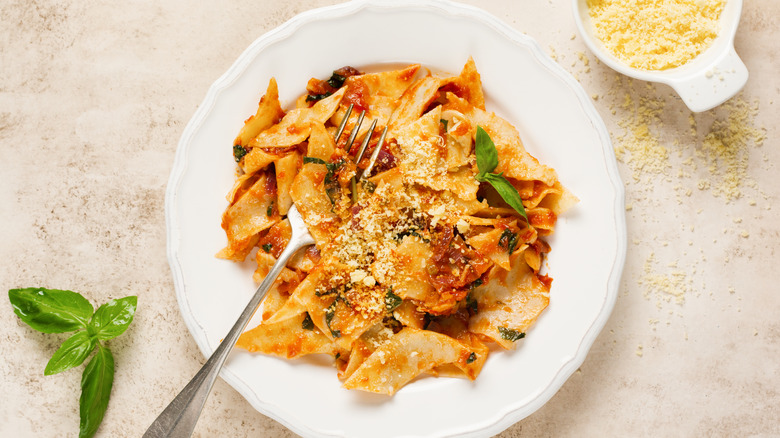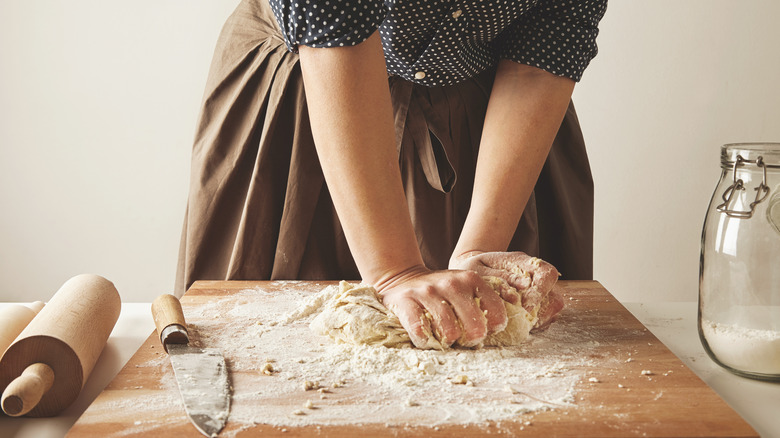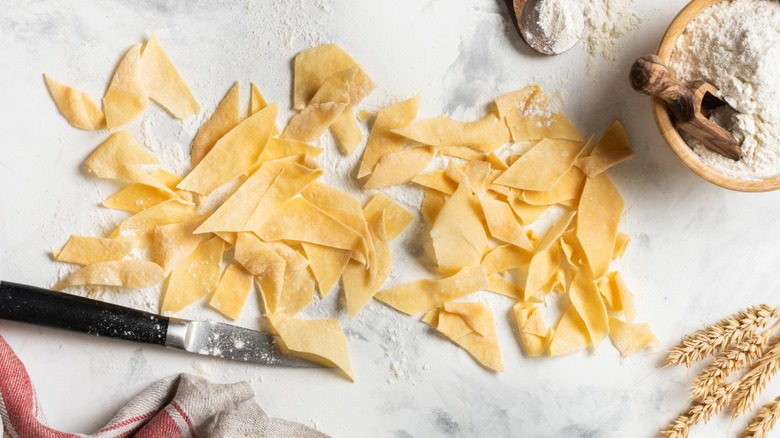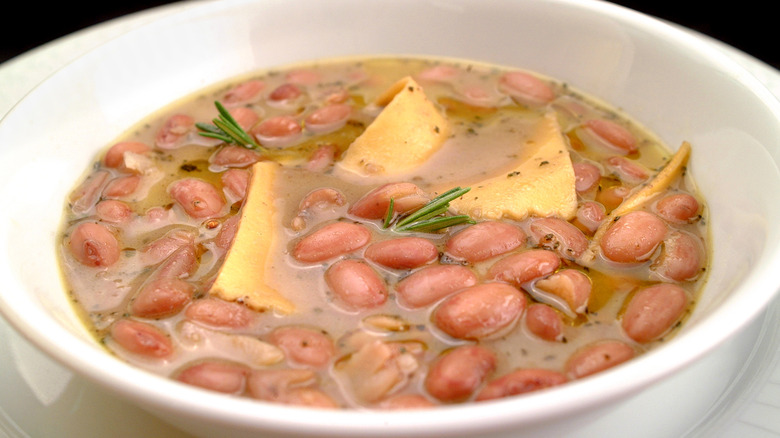The Best Part Of Maltagliati Pasta Is That It Should Never Be Perfect
Perfectly imperfect, maltagliati might be a little rough around the edges, but that's exactly the charm of this unique pasta variety. One of the countless noodle shapes that exist, you might yet have come across maltagliati, but it's better late than never.
Just as horizontally challenged as it is vertically, maltagliati are a flat pasta whose shape remains up for debate. Meaning "poorly cut" in Italian, maltagliati often look like a collection of doughy odds and ends. Yet, despite their rugged demeanor, they continue to be a beloved pasta shape for many across the Italian landscape. As for why, one can assume the popularity of this pasta shape is thanks to their air of realness and attainability. After all, making perfectly-shaped orecchiette or agnolotti can be overwhelming, whereas the thought of making a purposefully "bad-looking" pasta has the exact opposite reaction.
Sauce them however you like and pair them with any vino you wish, just always remember that regardless of how you serve a plateful of maltagliati, the further from perfect they are, the better.
Maltagliati's modest roots
If pasta is a quintessential component of cucina povera, then maltagliati are the ultimate expression of not letting anything go to waste. Symbolic of the classic Italian cooking style defined by using limited ingredients, the origins of maltagliati most likely traced back to this sort of peasant-style cooking that took place in the northeastern region of Emilia-Romagna.
In fact, in the book "Sauces & Shapes: Pasta the Italian Way", maltagliati are described as being made from the pasta that was left behind following during the making of thinly rolled sheets destined for tortellini, ravioli, or tagliatelle. Much like the palm-rolled pasta scraps known as strozzapreti, maltagliati were a way of recycling pasta scraps in a creative way. However, the pasta has become so beloved that mass-produced versions now exist, with pieces of pasta cut into relatively neat diamond shapes.
That said, handmade maltagliati are still a cultural marvel. In fact, maltagliati crafted in Emilia-Romagna are recognized as a prodotto agroalimentare tradizionale (P.A.T.), which is a designation for heritage products given by each regional government, in collaboration with the Italian Ministry of Agricultural, Food and Forestry Policies. Serving as a delicious piece of culinary history, making the pasta from scratch is a testament to the laboriousness of pasta-making.
The making of maltagliati
Although true maltagliati are made from leftover dough, you can still whip up a batch anyway. Given that most fresh pasta made in Emilia-Romagna is made with a mixture of flour, water, and eggs, which gives dough its vibrant golden hue, you can also opt for a basic flour and water mixture, should you please. As for the exact process, don't overthink it too much!
Start by pouring some flour onto a wooden board, crafting a well in the middle. At this point, Galbani recommends adding a few whole eggs to the center and whisking, before slowly incorporating the surrounding flour. Once a crumbly dough starts to form, add some water and knead for several minutes until smooth. After letting the dough rest (wrapped) in the fridge, it's finally time for the fun part — shaping the pasta, imperfectly.
Using a pasta machine (or rolling pin for a totally old school feel), begin rolling out thin sheets. These sfoglie can then be directly cut into mismatched shapes. Just remember to dust them with some flour to avoid the pasta from sticking together as you repeat the process with the remaining dough. When all the dough has been used, the pasta is ready to be cooked and sauced following the recipe of your choice.
How maltagliati are best enjoyed
Thanks to their unique shape and porous texture, maltagliati lend themselves wonderfully to an array of soups and pasta sauces. Though most traditional recipes tend to be minestrone-style stews or versions of pasta e fagioli, Cook Corriere shares that these irregularly-shaped dough pieces can also be prepared in innovative pasta dishes served with escarole, olives ,and crunchy salami, or even with sardines and fennel fronds.
Likewise, maltagliati can also benefit from being simply sauced in a simmered sugo or leftover ragù just as much as they shine with a vibrant and herby pesto sauce. Not to mention that coupling the pasta with any seasonal vegetables that have been kicking around in your fridge too long are also a great match.
As for what to drink with a big ol' serving of maltagliati, the rule of thumb is to think about pairing wines with the sauce rather than the pasta itself. While tomato-based dressings work stunningly with medium-bodied reds like Chianti, herby and vegetable-heavy sauces go with light-bodied white wines like Pinot Grigio. With so much to think about, there's no better time than the present to start planning how you'll serve up your next batch of maltagliati!



